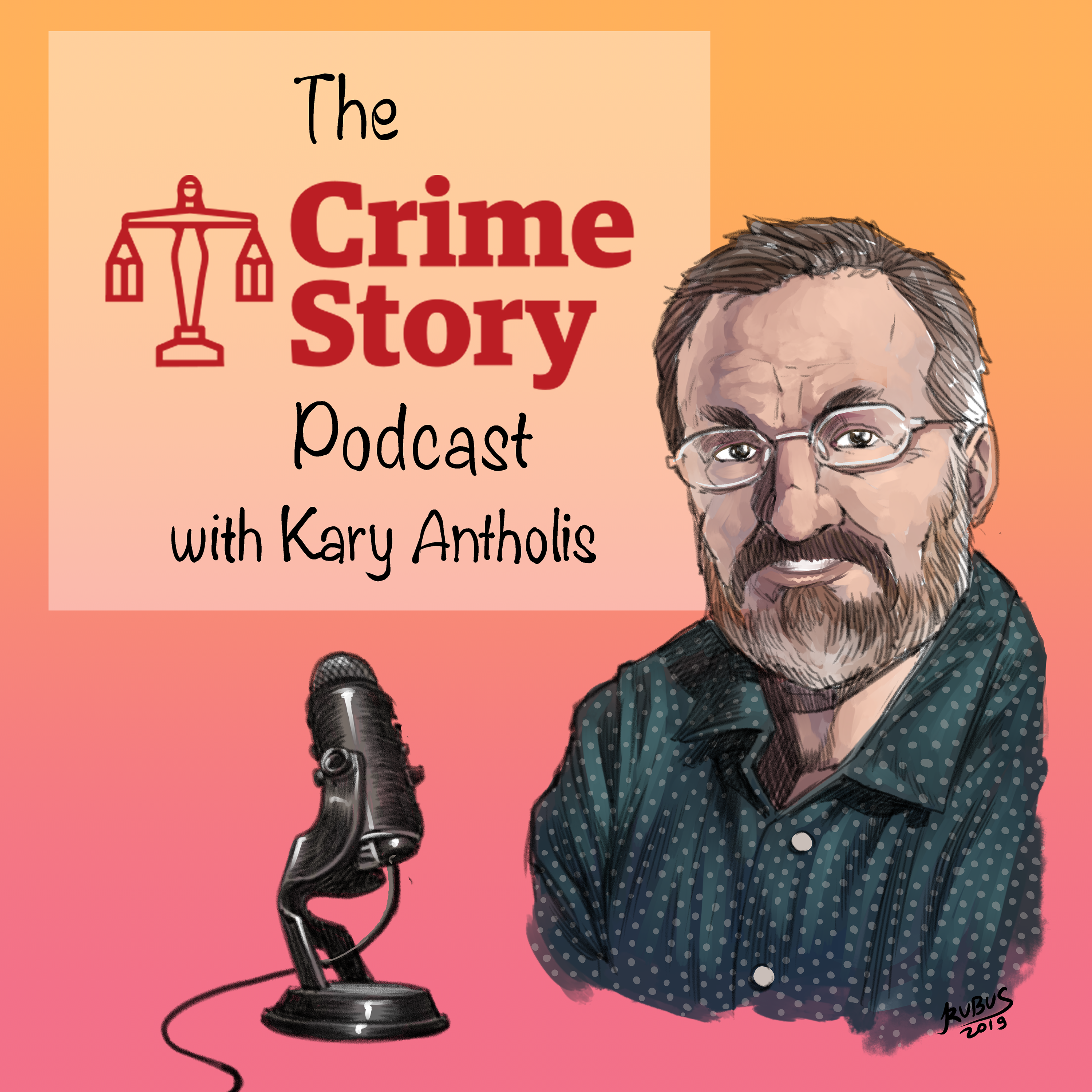“When writing a novel a writer should create living people; people not characters. A character is a caricature.”
- Ernest Hemingway, Death in the Afternoon
Anne Andersen-Doyle has traveled to Los Angeles from North Stradbroke Island, off the coast of Brisbane, Australia, where she volunteers teaching indigenous children to read. When asked by Prosecutor Habib Balian whether she was eager to come testify in the trial, Andersen-Doyle replies:
ANDERSEN-DOYLE: CONSIDERING THE IMPORTANCE OF THE MATTER, I THOUGHT I OWED IT TO KATHIE. THEN I WAS WORRIED ABOUT THE CORONAVIRUS, BUT THEN I CHANGED MY MIND AND THOUGHT, WELL, I WILL GO ANYWAY.
Andersen-Doyle goes on to testify that each of the multiple occasions (in late 1981 and early 1982) that she spoke with Kathie Durst was triggered by the same stimulus – a traumatic argument between Kathie and her then husband Robert that left Kathie shaken and trembling in fear. Kathie would flee her penthouse apartment, climbing across the terrace to seek refuge in Andersen-Doyle’s home.
The Prosecution’s strategy in The People vs. Robert Durst is to prove that Durst killed Susan Berman by proving that the killing was part of a series of three interconnected murders that included Durst’s wife Kathie (who disappeared in 1982), Berman (who was killed in December 2000) and Durst’s Galveston, Texas neighbor Morris Black (who was killed in late September 2001).
The Prosecution has Andersen-Doyle testifying in person to help make palpable for the jury the impact on Kathie Durst of Robert’s abusive behavior. Deputy District Attorney Habib Balian asks Andersen-Doyle to describe her encounters with Kathie, and Andersen-Doyle responds:
ANDERSEN-DOYLE: WHEN SHE WAS IN THOSE ACUTE STRESS MODES. SHE WOULD BE, YOU KNOW, SHE WOULD COME OVER IN HER, UH, YOU KNOW, EITHER IN HER PAJAMAS OR IN, YOU KNOW, IN HER LOUNGE WEAR UNDERWEAR, WHATEVER YOU CALL IT. SHE WOULD BE DISHEVELED. SHE WOULD BE, IT WOULD BE A LITTLE BIT LIKE STRAY DOG THAT WOULD COME OUT OF THE RAIN AND SHE WOULD JUST WANT TO GET AWAY. AND I WOULD SAY IT WOULD HAVE BEEN HUGELY EMBARRASSING FOR HER, BUT SHE PROBABLY FELT THAT SHE HAD TO. SHE FELT THAT SHE COULD TRUST ME AND THAT I WOULD LET HER IN. AND WE COULD TALK TO EACH OTHER AND STUFF.
BALIAN: IN DESCRIBING HER PHYSICAL APPEARANCE, WHEN SHE CAME OVER, HER PHYSICAL DEMEANOR…
ANDERSEN-DOYLE: WELL, SHE WAS VERY COWERING AND SHE WOULD BE. HER HAIR WOULD BE DISHEVELED. SHE’D BEEN CRYING. SHE’D BE SHAKING. SHE’D BE, YOU KNOW, SHE’D BE A COMPLETE MESS BASICALLY, YOU KNOW?
Later Balian leads Andersen-Doyle to describe a specific incident that occurred late in 1981, just a few months before Kathie Durst would disappear.
ANDERSEN-DOYLE: FROM THAT NIGHT, MY SPECIFIC MEMORY WAS THAT THEY (KATHIE AND ROBERT) HAD A FIGHT ABOUT SIGNING SOME KIND OF DOCUMENT AND THAT THE FIGHT HAD GONE OUT OF CONTROL AND SHE WAS SUBSEQUENTLY FEARFUL FOR HER FOR LIFE.
Balian and the prosecution succeed in this instance in “presenting” Andersen-Doyle and Kathie Durst as what Hemingway would call “living people” in the imagination of this listener (and I suspect in the juror’s imaginations as well). Andersen-Doyle has established herself as a kind-hearted person who traveled into a pandemic to help a friend who has been missing for 38 years. And she has painted a portrait of Kathie as a beautiful young woman who was battered into an abused animal seeking refuge at her neighbor’s window sill.
The defense indicated in their opening statement that they would paint a different image of Kathie Durst; an image of a drug-using, social-climber who got used to the high life afforded her by her marriage to Robert Durst.
It falls to Chip Lewis to try to craft alternative images of these “living people” that more neatly fit into the defense’s preferred narrative.
Lewis begins by trying to establish that Kathie Durst and Andersen-Doyle were part of a bon-vivant lifestyle.
LEWIS: AT THAT TIME YOU WERE, AND I DON’T MEAN TO PUT YOU ON THE SPOT. I COULD PRAISE YOU BECAUSE I’M FAMILIAR WITH YOUR WORK. YOU WERE A VERY SUCCESSFUL MODEL AT THAT TIME.
ANDERSEN-DOYLE: YEAH.
LEWIS: AND AS YOU SHOULD BE, YOU WERE MAKING VERY GOOD MONEY.
ANDERSEN-DOYLE: YEAH. M-HM
LEWIS: THIS TIME IN NEW YORK CITY IN THE EARLY EIGHTIES. WAS IT FAIR TO SAY, PEOPLE OF YOUR AGE AND OF YOUR SUCCESS AND MRS DURST’S AGE, IT WAS A VIBRANT SCENE?
ANDERSEN-DOYLE: IT WAS A VIBRANT CITY AND IT WAS ALSO A SAD CITY BECAUSE IT WAS AIDS AT THE TIME. SO THE VIBRANCY WAS KIND OF LACED WITH A LOT OF TRAGEDY AND SADNESS AS WELL.
LEWIS: SPEAKING MORE ABOUT THE VIBRANCE OF THE CITY. THIS WAS WHEN STUDIO 54 WAS IN ITS HEYDAY.
ANDERSEN-DOYLE: YEAH, I THINK STUDIO 54 MIGHT’VE BEEN A BIT EARLIER, MAYBE SEVENTIES, 76, 77, I THINK.
LEWIS: LATE SEVENTIES INTO THE 80S. SOMEWHERE IN THERE.
ANDERSEN-DOYLE: YEAH. YEAH.
LEWIS: CLUB XENON.
ANDERSEN-DOYLE: I DON’T KNOW ABOUT THAT. I DIDN’T KNOW THAT ONE.
LEWIS: IN CERTAIN MORE UPSCALE CIRCLES IN THE PARTY SCENE IN NEW YORK, THERE WAS A LOT OF DRUG USE.
ANDERSEN-DOYLE: ABSOLUTELY. YEAH.
LEWIS: I’M CERTAINLY NOT SUGGESTING YOU DID ANYTHING, BUT YOU WERE FAMILIAR WITH FOLKS IN YOUR INDUSTRY AND IN THIS LAST STYLE IN MANHATTAN USING A LOT OF COCAINE.
ANDERSEN-DOYLE: YEAH.
LEWIS: LET ME ASK YOU, DID KATHIE EVER DISCLOSE TO YOU HER COCAINE USE?
ANDERSEN-DOYLE: NEVER
LEWIS: NEVER MENTIONED IT AT ALL?
ANDERSEN-DOYLE: NEVER
LEWIS: DID SHE EVER, UM, DISCUSS WITH YOU ANY OTHER DRUG USE OR ABUSE OF ALCOHOL?
ANDERSEN-DOYLE: NEVER.
LEWIS: NEVER MENTIONED IT.
ANDERSEN-DOYLE: NEVER.
Sensing that his attempts to paint Andersen-Doyle and Kathie Durst as part of a set of drug using glitterati has reached a dead end, Chip Lewis tries to take another tack.
LEWIS: DURING YOUR DISCUSSIONS WITH KATHY DURST, SHE WOULD CONFIDE IN YOU ABOUT AND TO MAKE, TO MAKE SURE I’M USING YOUR WORDS, WHAT YOU TERM “GIRL TALK.” IS THAT CORRECT?
ANDERSEN-DOYLE: BETWEEN WOMEN THEN, YEAH.
LEWIS: LADIES?
ANDERSEN-DOYLE: GIRLS, WOMEN, LADIES. YEAH. PEOPLE OF THE FEMALE SEX. YES.
LEWIS: AND DURING THOSE DISCUSSIONS SHE WOULD OFTEN TALK ABOUT MEN?
ANDERSEN-DOYLE: NO, SHE WOULDN’T TALK ABOUT MEN. SHE WOULD… IT WOULD BE MORE ABOUT HER SITUATION AND ABOUT HOW SHE FELT IN HERSELF ABOUT HER SITUATION. IT WAS NOT ABOUT MEN. I MEAN I WAS MARRIED AND SO WAS SHE. SO WE DIDN’T TALK ABOUT MEN PER SE.
Lewis requests and is granted permission to share with Andersen-Doyle the transcript of an interview with a team led by Los Angeles Deputy DA’s Lewin and Balian, in which Andersen-Doyle Says that she and Kathie discussed “guys” during one of their conversations.
LEWIS: DOES THAT REFRESH YOUR MEMORY RELATIVE TO KATHIE DISCUSSING “GUYS” DURING THOSE DISCUSSIONS?
ANDERSEN-DOYLE: WELL, LIKE I SAID, “GUYS,” IT WAS OUR GUYS.
Lewis again gives up on the line of questioning. He seems to recognize that his efforts to depict these women as gossipy, flirty, promiscuous party girls has landed squarely in the realm of what Hemingway would call “caricature” and that the jury appears to be having none of it.
After Andersen-Doyle completes her testimony, Deputy DA Balian present the jury with the prerecorded video testimony from 2017 of James Varian, a retired New York City Detective who interviewed Andersen-Doyle on February 10, 1982, less than two weeks after Kathie Durst’s disappearance and just a few months after Andersen-Doyle’s particularly fraught encounter with Kathie. Varian wrote a contemporaneous report about that interview, and though he had no specific memory of the interview, he testifies to the integrity of the report and presents its contents:
VARIAN: ANNE [ANDERSEN-DOYLE] STATED THAT SOMETIME DURING THE LATTER PART OF SEPTEMBER OR THE BEGINNING OF OCTOBER, KATHERINE [DURST] DID LEAVE HER APARTMENT VIA THE BEDROOM WINDOW IN HER PJ’S AND WALKED AROUND THE OUTSIDE BALCONY TO ANNE’S BEDROOM WINDOW AND WAS CRYING. ANNE LET HER IN AND KATHERINE STATED THAT BOB [DURST] HAD BEAT HER AND THAT HE WANTED TO KILL HER. SHE FURTHER STATED THAT HE HAD A GUN AND WAS AFRAID OF BEING SHOT. KATHERINE STATED THAT BOB WANTED HER TO SIGN A DISCLAIMER CLAUSE THAT SHE WOULD RELINQUISH ANY CLAIMS TO MONEY OR PROPERTY. SHE WAS AFRAID TO SIT IN ANY ROOM WHICH HAD A WINDOW THUS SHE SPENT TWO HOURS SITTING IN THE BATHROOM.
In the video of the cross-examination, Defense Attorney, Dick Deguerin tries to poke holes in Varian’s testimony with little apparent impact on the jury.
And so, as each juror crafts his or her own sense of this unfolding story, this day’s storytelling is dominated by the “living people” that the prosecution has presented: the cowering, abused and frightened Kathie Durst and the stoic, kind-hearted retired supermodel Anne Andersen-Doyle.
For links to all of Crime Story’s coverage of the The People vs. Robert Durst, click here.



